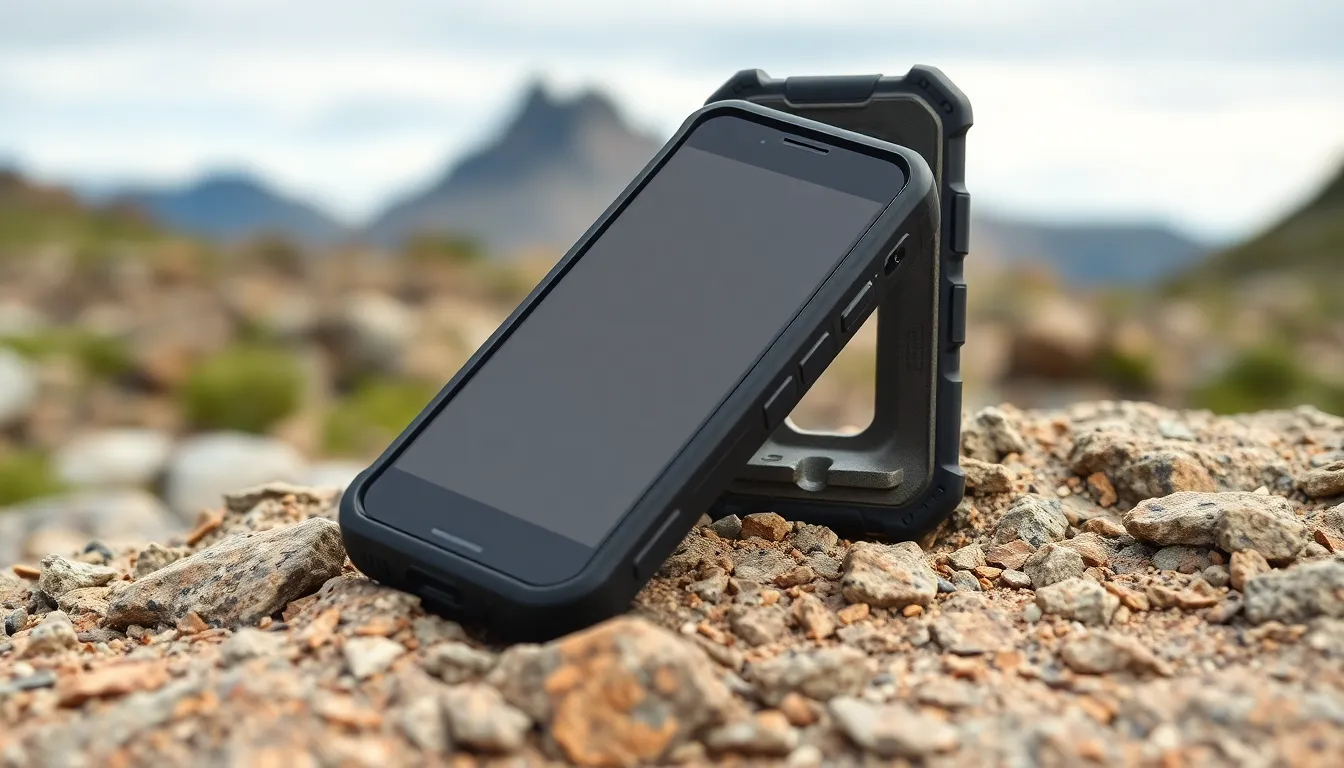In a world obsessed with sleek designs and glossy finishes, the rise of “ugly phones” might just be the breath of fresh air everyone needs. These quirky gadgets challenge the status quo, proving that beauty isn’t everything. They’re the lovable misfits of the tech world, flaunting their unconventional looks while packing a punch with functionality.
Imagine strutting down the street with a phone that’s less about impressing your friends and more about getting the job done. Ugly phones aren’t just a trend; they’re a statement. They remind us that sometimes, it’s what’s on the inside that counts—like a heart of gold wrapped in a case that looks like it survived a paintball fight. Embrace the charm of the unconventional and discover why these “ugly” devices might just be the perfect fit for your lifestyle.
Table of Contents
ToggleThe Concept Of Ugly Phones
Ugly phones redefine the traditional notion of mobile design. These devices prioritize practicality over aesthetics, making them stand out in a sea of sleek smartphones. Functionality remains at the forefront, allowing users to focus on what matters most.
Many of these phones feature rugged designs that withstand outdoor use. Users appreciate the durability, knowing their devices can handle rough environments without damage. Some models showcase unique colors or unconventional shapes, further setting them apart.
The market for ugly phones has gained traction among consumers who value performance and innovation. Notable examples include phones with long battery life and essential features, appealing to those in search of reliability over trendy designs.
Additionally, the quirky appearance of these devices sparks conversation and curiosity. People often find themselves drawn to the charm and character these phones exude. Embracing an ugly phone serves as a statement about personal preferences, highlighting the importance of individual choice in technology.
In essence, ugly phones highlight a trend that encourages functionality and personality over visual appeal. Users can celebrate their unique gadgets, reveling in their differences while benefiting from superior performance. These devices remind everyone that utility leads the way, allowing for a diverse landscape in mobile technology.
Historical Context

Ugly phones challenge traditional design norms in mobile technology. Their roots trace back to early mobile devices that valued practicality over aesthetics.
Early Examples
Early mobile phones exhibited robust, utilitarian designs. Models like the Motorola DynaTAC 8000X featured bulky appearances, prioritizing function over form. Often, these first-generation devices offered basic features deemed essential for communication. Users appreciated their straightforward operation, despite the lack of sleek profiles. Environments dictated design, with durability being key for outdoor and on-the-go use. Consumers recognized the importance of reliability, leading to the acceptance of these unconventional forms long before modern standards emerged.
Evolution Over Time
Over time, the concept of ugly phones gained traction as technology advanced. Manufacturers began experimenting with rugged designs, catering to niche markets. Phones like the CAT phones series emerged, signaling a shift towards functionality with unique appearances. Increasingly, the focus on long battery life and essential features attracted users seeking practical solutions. Trends shifted, embracing individuality and the charm of unconventional devices. These developments marked a clear movement away from the sleek, uniform designs that dominated the market, illustrating a growing appreciation for personality in mobile technology.
The Appeal Of Ugly Phones
Ugly phones capture attention with their focus on practicality instead of aesthetics. These devices celebrate functionality, highlighting the importance of reliable performance.
Function Over Form
Functionality reigns supreme in ugly phones. These devices often feature rugged constructions designed to withstand harsh environments. Users appreciate long battery life and essential applications that enhance everyday use. Consider models equipped with superior weather resistance and shockproof capabilities. Such attributes ensure that these phones perform even in challenging conditions. Therefore, ugly phones appeal to individuals valuing reliability in their tech.
Unique Designs
Unique designs define ugly phones, setting them apart in the crowded smartphone market. Many models boast unconventional shapes and vibrant colors that attract curiosity. Styles range from chunky, retro aesthetics to innovative shapes resembling toolbox designs. This distinctiveness often sparks conversations, allowing owners to showcase their personal tastes. Embracing these unconventional looks fosters a sense of individuality in a world dominated by sleek, uniform designs. Thus, ugly phones become more than mere communication tools; they embody a statement of personality.
Notable Ugly Phones
Ugly phones stand out for their unconventional designs and practical functionalities. Several models exemplify this trend.
Specific Models
Motorola’s DynaTAC 8000X remains iconic for its bulky, pioneering design. Nokia’s 3310 also gained fame for its durability and battery life, often considered unattractive but reliable. Caterpillar’s Cat phones feature rugged exteriors, designed for harsh environments. Another example includes the Blackview BV9900, which combines durability with essential features, ensuring performance in challenging conditions. Users appreciate these devices for their utilitarian appeal, prioritizing function over aesthetics.
Innovative Features
Notable ugly phones often include innovative features that enhance usability. Long-lasting battery life caters to users who require sustained performance without frequent recharging. Some models offer rugged construction, ensuring resilience against drops and extreme weather. Advanced waterproofing capabilities allow for worry-free outdoor usage. Customizable interfaces provide added convenience, letting users tailor devices to their specific needs. Intriguingly, these features reflect a shift towards functionality, emphasizing practicality in a market focused on appearances.
The Future Of Ugly Phones
Ugly phones show potential for growth in a market focused on functionality. They challenge norms, appealing to users desiring distinctive devices that emphasize practicality.
Trends To Watch
Rugged designs leading the way focus on durability and performance. Manufacturers increasingly incorporate long-lasting batteries, enabling users to rely on their devices for extended periods. Increased interest in eco-friendly materials leads to sustainable options among ugly phones. Customizable features attract consumers looking to personalize their gadgets. The rise of niche user communities further fosters loyalty, encouraging innovation in designs that cater to specific needs.
Market Predictions
Market analysts predict steady growth in the ugly phone segment over the next five years. Companies like Nokia and Motorola will likely lead with iconic models that embody practicality. As functionality becomes a primary selling point, user preferences will shape new designs. Increased competition pushes brands to innovate, enhancing features such as waterproofing and shock resistance. This trend towards embracing individuality strengthens, transforming how consumers view mobile technology.
Embracing the charm of ugly phones highlights a significant shift in consumer priorities. As functionality takes center stage, these devices cater to those who value performance over aesthetics. Their rugged designs and practical features resonate with users seeking reliability in their technology.
The growing appreciation for individuality in mobile devices indicates that ugly phones are more than just a trend. They represent a movement towards celebrating unique preferences and practical needs in a world dominated by sleek designs. As manufacturers continue to innovate, the future of ugly phones looks promising, paving the way for a diverse range of options that prioritize what truly matters—functionality and durability.



